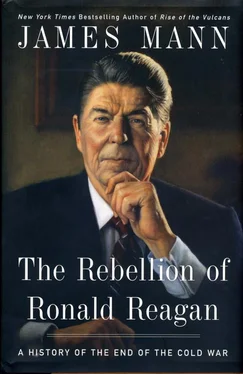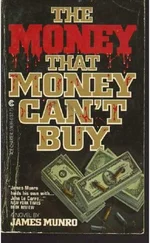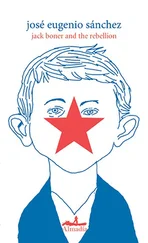Gorbachev assumed that he could accomplish these reforms under the leadership of the Communist Party, and that doing so would not jeopardize either the party or the socialist system. The goal was to breathe new life into that system by relaxing the top-down, command approach to the economy, by opening the way for dissent, and by encouraging a freer flow of information. The policy of glasnost (openness) took hold in the months after the nuclear disaster at Chernobyl in April 1986, which demonstrated that Soviet officials had gone to great lengths, and in dangerous ways, to conceal information. Soviet media were encouraged to become more lively and to write about problems in the Soviet Union rather than pretend they didn’t exist. Gorbachev pushed for major changes in personnel too. “Chernobyl showed to Gorbachev that there was a level of officials who cheated him, who didn’t tell him the truth,” recalled Anatoly Adamishin, a deputy foreign minister. “So he decided to change the upper middle levels [of government].” 4
On December 16, 1986, to dramatize the new political climate, Gorbachev allowed the Soviet Union’s leading dissident, Andrei Sakharov, to return to Moscow from seven years of internal exile in the closed city of Gorky. Sakharov, the physicist who once had been in charge of Soviet development of the hydrogen bomb, was for decades a staunch advocate for freedom of speech and for demilitarization of Soviet foreign policy. At the beginning of 1987, at a meeting of the Communist Party Central Committee, Gorbachev spoke openly, though vaguely, about the possibility of choosing officials through elections with secret ballots. “Democracy is not the opposite of order,” he said in one speech that winter. “It is order of a greater degree, based not on implicit obedience, mindless execution of instructions, but on full-fledged active participation by all the community in all society’s affairs.” 5
Gorbachev’s domestic reforms were deeply unsettling to other Communist leaders in Eastern Europe. Their own power had long been based on maintaining the same control over dissent and political opposition as the Soviet Union had established. In Prague, where the Soviet Union had sent troops to crush a brief movement toward liberalization in 1968, a mordant joke began making the rounds that perhaps it was time for Czechoslovakia to send some “fraternal assistance” to the Soviet Union. 6
The impact of the changes in the Soviet Union hit particularly hard in East Germany, where Honecker had remained atop the Communist Party hierarchy since 1971. Other Eastern European officials paid lip service to Gorbachev’s policy of glasnost. “What is taking place in the Soviet Union is correct, completely correct, and must fully be supported,” said Vasil Bilak, the hard-line ideologist for Czechoslovakia’s Communist Party. 7By contrast, Honecker and his aides made clear that they had no intention of following down the road of glasnost.
In the spring of 1987, Kurt Hager, the East German Communist official in charge of culture and ideology, was asked about Gorbachev’s reforms. “If your neighbor decided to repaper the walls of his house, would you feel bound to repaper your home, too?” Hager retorted. 8Honecker’s regime moved to censor the coverage in the East German press of developments inside the Soviet Union. Frank Herold, who served from 1984 to 1988 as the Moscow correspondent for the East German Communist Party organ Neues Deutschland , later recalled that in his last two years there, he was barred from reporting about what was happening in political and intellectual life, because the subjects were too sensitive and too threatening to Honecker’s regime. “I only covered science, sports and fine arts, no politics at all,” Herold said. 9
For ordinary East Germans, it was especially demoralizing to see that even the Soviet Union was opening up, while their own government was not. Even though they could not read about Gorbachev’s reforms in East German newspapers, they could hear the reports about them from other sources, such as West German, British, and American radio stations. “Gorbachev had a very strong echo within the East German population,” recalled Bettina Urbanski, who in 1987 was serving as the editor in charge of socialist countries for the East Berlin newspaper Berliner Zeitung . “The more he moved towards reform, the more restrictive the [East German] government became, both internally and externally in insisting on the wall.” 10Lothar de Maizière, the attorney and Lutheran Church leader who would briefly serve as East Germany’s prime minister after the fall of the wall, said he felt that the turning point in East Germany’s collapse came in 1986 and 1987. “It was clear Honecker was not going to follow Gorbachev,” Maizière said. “At the time, I was active in the Protestant Church, and we were trying to keep people from leaving the country, telling them they could help bring about change. But people didn’t believe it any more.” 11
At the meeting in East Berlin, Gorbachev unveiled another significant change to the Eastern European leaders. This one concerned not domestic policy but military doctrine. The Warsaw Pact, it was announced, would henceforth be considered a strictly defensive alliance. Its members would never start a war or strike first with nuclear weapons. They had no territorial ambitions in or out of Europe. Warsaw Pact nations “do not regard any individual government or group of people as their enemy,” they declared in a written statement that was released on May 28, 1987. 12For Eastern European leaders such as Honecker, this new doctrine meant that they were less able than in the past to justify repressive policies at home. How could they justify a hard line on the basis of an external threat if there was no longer an enemy?
The change in military doctrine was aimed at demonstrating to the world—above all, to Western Europe—that the Soviet Union should no longer be considered threatening. Gorbachev had decided to concentrate on Europe. “It’s obvious that not a single issue can be decided without Europe,” he had told his aides in the spring of 1987. “We even need it for our domestic affairs, for perestroika [his term for restructuring Soviet society]. And in foreign policy Europe is simply irreplaceable. Theirs is the strongest bourgeoisie, not only economically, but politically, too.” 13
These changes in the nature of the Warsaw Pact were made public at the time. Western officials and Soviet specialists quickly recognized their considerable significance. Yet Gorbachev didn’t stop there. Behind closed doors in Berlin, he first broached the idea that the Soviet Union would not send its forces into Eastern Europe to preserve their fraternal Communist Party regimes, as it had in Hungary in 1956 and in Czechoslovakia in 1968. Leaders such as Honecker could no longer rely on Soviet military intervention to save them if they could not hold things together on their own. American intelligence agencies did not learn about this aspect of the Warsaw Pact gathering until several years later. It turned out to be an important step toward ending the Cold War. 14
When Gorbachev had become Communist Party leader, Soviet military leaders had supported his drive for change, hoping that economic reforms could help upgrade military technology, which they realized had fallen further and further behind the West. But by 1987, Gorbachev had realized that he couldn’t effect serious change in the Soviet Union if he left the military untouched. “Gorbachev’s dilemma was that he could not avoid impinging on the military’s prerogatives if he was to revitalize the economy, nor could he avoid a change in Soviet military doctrine if he was to relieve international tension so as to permit more attention to domestic reform,” observed Jack Matlock, who spoke regularly to Gorbachev after arriving as the American ambassador to Moscow in 1987. 15
Читать дальше












